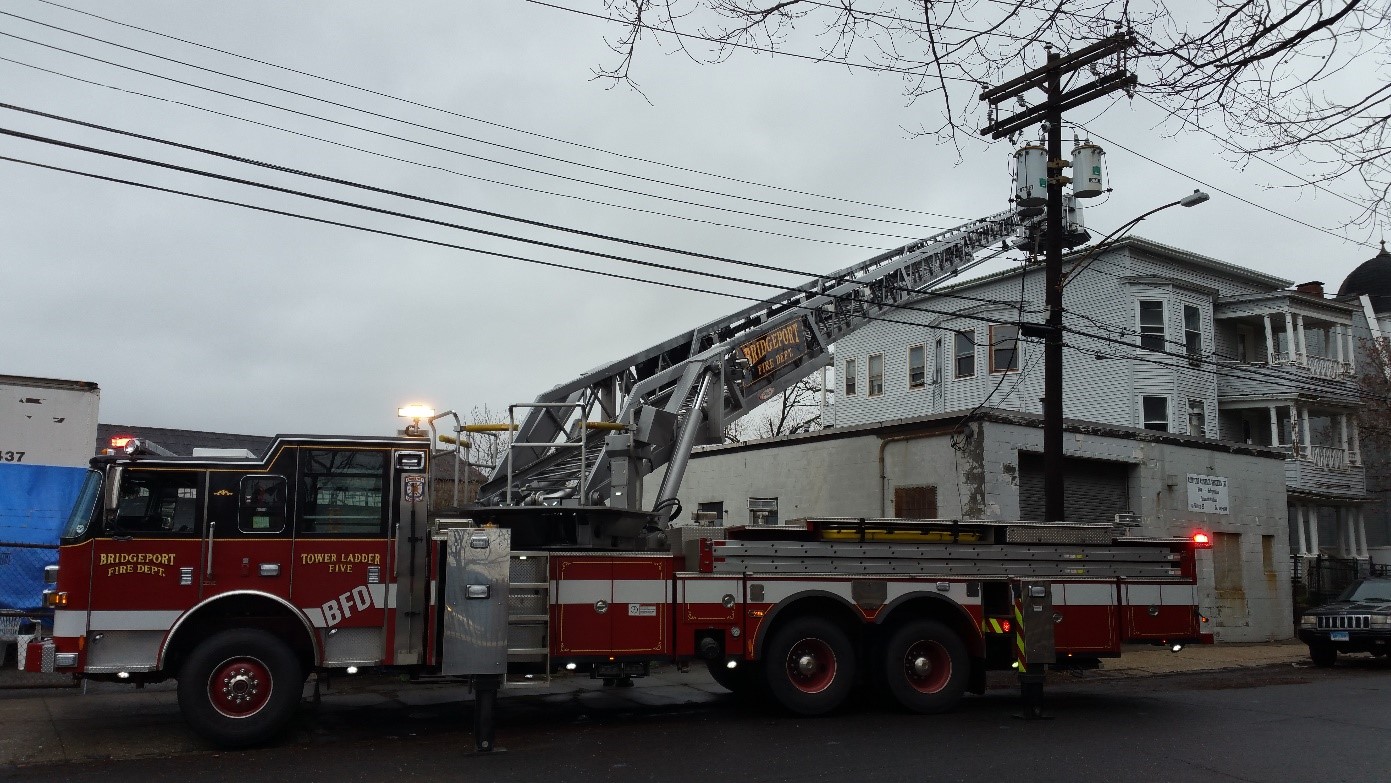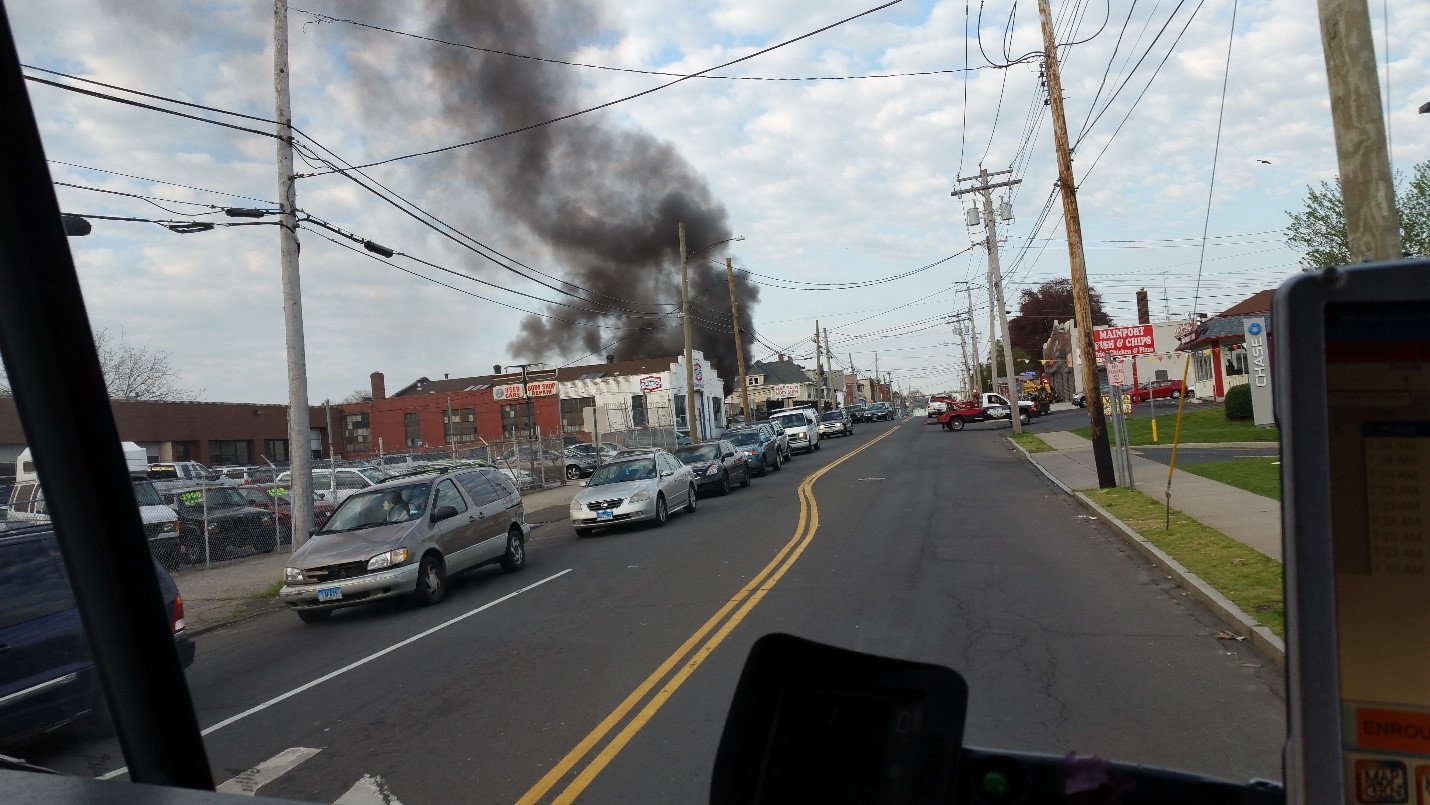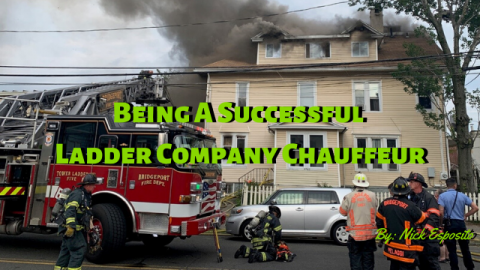Ladder company chauffeur’s have a lot to consider when responding to a fire. A successful apparatus placement is only attained when the operator is focused and is taking all factors into consideration during response. So how do we set ourselves up for becoming a successful ladder company chauffeur?

Achieving a successful aerial placement begins long before the apparatus even leaves the barn. There’s a lot more to being a competent truck driver then driving around, tootin’ the horn and waving to your fans. The operator must have an in-depth understanding of the vehicle and the expectations placed on them when responding.
Take a class, learn from, and listen to your senior men and experienced operators. Ask questions. Well thought out, appropriate questions. Members should be more than happy to help you, as long as it looks like you’re paying attention and trying to put it all together. They can’t just hand you their knowledge and experience. You’re going to have to put in your own time and earn your own experiences.
Read and understand your operator’s manual. Don’t have one? Get a copy. Somebody has to have it. This will help you to better understand the actual capabilities and limitations of the apparatus. It will also help to clear up any inconsistencies or reinforce some concepts you weren’t quite getting.
Understand the limitations of your vehicle, and be good with regular maintenance. Take the information you’ve gained from reading the manual and talking with experienced operators, and put it to work for you. Hopefully when you do apparatus checks, you check the vehicle in the same spot every time. There’s value to this. I know people want to get out and set the truck up in different places, but when it comes to routine checks and maintenance, consistency is important. Try and set it up in the same spot. Why? It’s good because if the rig sounds the same and reacts the same way when you’re doing the truck checks and putting the aerial through its paces, you’ll gain confidence and an understanding that things are in working order. If for some reason when you’re doing your checks, and the vehicle begins to react differently, or is making strange sounds, it’ll be easier to troubleshoot the problem. This will pay off on the street when you’re working the truck and something happens or doesn’t sound right.
Once you’re comfortable and confident with the operations and functions of the apparatus, it’s time to hit the streets. Get used to driving the truck. It’s not your F350. It’s bigger and heavier, and doesn’t handle the same way. Pay attention to the length and check your mirrors frequently. Anticipate rear end swing and make sure you plan for it. We could write a whole article on the actual driving of the apparatus, that’ll be for another day.
Practice. A lot. All over your response area. Set your rig up on real structures on real streets with real obstacles. During the day, at night, and at routine calls. Your town expects you to do fire department stuff when there’s an alarm. Take advantage of these opportunities and work to get good spots. It will raise your confidence and ability, and show others what is needed to get a good spot. In training, it’s ok to fail. I’d much rather you try and get a spot at 3 in the afternoon in a no stress environment and not get it, then fail when I need you to get that spot at 3am when it matters. When you get out and set the truck up in places and fail, you learn what that looks like, understand what is needed to modify your position to get the spot, and can reposition. You also learn that some spots just can’t be had. Listen - If you only go to the high school on Sunday morning and set up in an empty parking lot with no obstructions, you’re not going to learn very much.
 Let’s talk about preparing for response. You need to be constantly sizing up. Time of day, weather, traffic patterns, seasonal changes that affect your town, etc. the considerations are endless. Know what’s important and how this will affect your response and set up. And this is all before the bell hits. At the receipt of the alarm, you need to start thinking about these considerations and put it all together. Based on the address you should be able to get a picture of the what you might be responding to. Is this a commercial or residential area? What types of building construction and occupancies are usually found in this area? It all matters. Start to think about it now, and not when you’re making the turn on to the block. Continue to listen to the radio for updates and modify your plan as necessary.
Let’s talk about preparing for response. You need to be constantly sizing up. Time of day, weather, traffic patterns, seasonal changes that affect your town, etc. the considerations are endless. Know what’s important and how this will affect your response and set up. And this is all before the bell hits. At the receipt of the alarm, you need to start thinking about these considerations and put it all together. Based on the address you should be able to get a picture of the what you might be responding to. Is this a commercial or residential area? What types of building construction and occupancies are usually found in this area? It all matters. Start to think about it now, and not when you’re making the turn on to the block. Continue to listen to the radio for updates and modify your plan as necessary.
Know your streets? The smart box – cell phones and GPS – are no substitute for an educated driver. Knowing your neighborhoods and streets will raise your confidence when responding. Getting directions from a computer that has no idea what you’re driving or what you’re trying to accomplish can set you up for failure. Expecting your officer to give you turn by turn directions is also unacceptable. Your officer has a lot to consider and needs to focus on the situation at hand and formulate a plan. You should at least know how to get to a particular neighborhood by taking the appropriate main roads and routes. Streets don’t move. So, if you’re serious about your craft, you’ll pay attention and learn them.
Once you get close talk with your officer and discuss any last-minute considerations – direction of travel, side of the road the fire is on, approaches of other responding units, wires and any other potential obstacles. Driving around the block to approach from the opposite direction might pay off in the end with a better spot. Talk it out.

Approaching the block. This is where you will earn your keep. Slow down. Speed here does not equate to being aggressive, and it will only lead to limitations later. As you approach your target, be professional and talk it out. Confidence is contagious. When you talk out what you see, this helps to slow you down, focus the crew and set a professional tone. Identify your priorities, as well as any obstacles and obstructions. What does your officer want you to focus on? Call out the fire location, any victims, wires, trees, parked cars, whatever you think is going to have an impact on you getting a good spot or not. Talking it out gets everyone on the same page and sets the expectation. Maybe the crew in the back sees something the crew in the front doesn’t. Work out the plan with your officer and crew, and verbalize the final expectation. “I’m going to park on the A/B corner, kick the cab out and shoot the outriggers between the parked cars. That’ll get us two sides and the roof.” If the officer has any problem with this, now would be the time to discuss it, otherwise, it’s a go, and the expectation is set. If you need a spotter to get into a tight location, let someone know before you hit that parking brake.

Being a successful and relied upon ladder company chauffer takes time and practice. Pay attention to the details, be honest with your abilities, and your confidence will go up. The end result is that you will become a competent and confident operator that your peers will learn to depend on.
Author: Nick Esposito @truck_tactics














